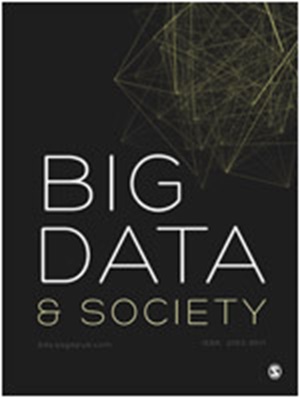用大流动数据建模COVID-19:监测和重申数据中的人员
IF 5.9
1区 社会学
Q1 SOCIAL SCIENCES, INTERDISCIPLINARY
引用次数: 2
摘要
为了更好地了解新冠肺炎大流行,公共卫生研究人员转向了“大移动数据”——从事监控资本主义的公司从移动设备中收集的位置数据。在发布以前的私人大移动数据集时,公司大肆宣扬他们“抗击”新冠肺炎的努力,研究人员强调了大移动数据在改进追踪疫情的传染病模型方面的潜力。然而,这些合作是由信息、获取和权力的不对称所定义的。数据发布的特点是,数据提供者没有义务实现公共卫生目标,特别是那些致力于社区参与模式的目标。数据公司、数据主体、研究人员和社区之间缺乏适当的重复性。当公共卫生和监控资本主义的议程越来越紧密时,人们被去中心化,监控与行动脱钩。本文认为,目前在新冠肺炎大流行中使用的大流动数据在以社区和个人为中心的框架方面是一种糟糕的方法。本文章由计算机程序翻译,如有差异,请以英文原文为准。
Modeling COVID-19 with big mobility data: Surveillance and reaffirming the people in the data
To better understand the COVID-19 pandemic, public health researchers turned to “big mobility data”—location data collected from mobile devices by companies engaged in surveillance capitalism. Publishing formerly private big mobility datasets, firms trumpeted their efforts to “fight” COVID-19 and researchers highlighted the potential of big mobility data to improve infectious disease models tracking the pandemic. However, these collaborations are defined by asymmetries in information, access, and power. The release of data is characterized by a lack of obligation on the part of the data provider towards public health goals, particularly those committed to a community-based, participatory model. There is a lack of appropriate reciprocities between data company, data subject, researcher, and community. People are de-centered, surveillance is de-linked from action while the agendas of public health and surveillance capitalism grow closer. This article argues that the current use of big mobility data in the COVID-19 pandemic represents a poor approach with respect to community and person-centered frameworks.
求助全文
通过发布文献求助,成功后即可免费获取论文全文。
去求助
来源期刊

Big Data & Society
SOCIAL SCIENCES, INTERDISCIPLINARY-
CiteScore
10.90
自引率
10.60%
发文量
59
审稿时长
11 weeks
期刊介绍:
Big Data & Society (BD&S) is an open access, peer-reviewed scholarly journal that publishes interdisciplinary work principally in the social sciences, humanities, and computing and their intersections with the arts and natural sciences. The journal focuses on the implications of Big Data for societies and aims to connect debates about Big Data practices and their effects on various sectors such as academia, social life, industry, business, and government.
BD&S considers Big Data as an emerging field of practices, not solely defined by but generative of unique data qualities such as high volume, granularity, data linking, and mining. The journal pays attention to digital content generated both online and offline, encompassing social media, search engines, closed networks (e.g., commercial or government transactions), and open networks like digital archives, open government, and crowdsourced data. Rather than providing a fixed definition of Big Data, BD&S encourages interdisciplinary inquiries, debates, and studies on various topics and themes related to Big Data practices.
BD&S seeks contributions that analyze Big Data practices, involve empirical engagements and experiments with innovative methods, and reflect on the consequences of these practices for the representation, realization, and governance of societies. As a digital-only journal, BD&S's platform can accommodate multimedia formats such as complex images, dynamic visualizations, videos, and audio content. The contents of the journal encompass peer-reviewed research articles, colloquia, bookcasts, think pieces, state-of-the-art methods, and work by early career researchers.
 求助内容:
求助内容: 应助结果提醒方式:
应助结果提醒方式:


